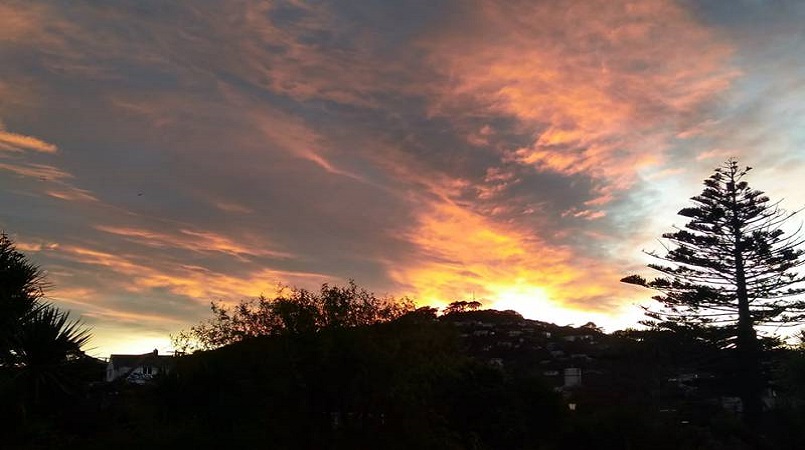
The striking sunrises and sunsets noticed by New Zealanders in recent weeks may be the result of leftovers from the Tongan volcano eruption, NIWA says.
NIWA - the National Institute of Water and Atmospheric Research - said it had been flooded with messages from people asking about the vibrant purple and orange hues lighting the sky.
NIWA colleagues at the Lauder Atmospheric Research Station in Central Otago confirmed their LIDAR (Light Detection and Ranging) instrument had been picking up unusual increases in aerosols in the stratosphere, about 20km to 25km above New Zealand.
It was thought the aerosols were the cause of the remarkable skyscapes being spotted around the country lately, NIWA said in a statement.
The aerosols originated from the plume of gas and ash that was ejected when the Hunga Tonga-Hunga Ha'apai volcano erupted in January. They have been dispersing around the globe, with concentrations spiking in the New Zealand region since mid-May.
Researchers at the Institut Pierre-Simon Laplace in Paris had analysed satellite data which showed that since April, concentrations of stratospheric aerosols from the eruption had tripled on the latitude on which Aotearoa laid.
Forecaster Nava Fedaeff said the phenomenon would not disappear any time soon.
"We're expecting we could see vibrant sunsets for even months to come. I think the concentrations are increasing so they're certainly not going away in the short term."
Aerosols left in the stratosphere by the eruption changed the way light scattered at sunset and sunrise, Fedaeff said.
"Usually when you see a sunrise or sunset, it is the clouds that morph into the most vibrant colours.
"However, when stratospheric aerosols are present following a volcanic eruption, they scatter and bend the light as the sun dips or rises past the horizon, creating a glow in the sky with hues of blue, purple, and violet."
Since the colours achieve their greatest intensity after the sun has set or before it rises, Fedaeff said volcanic twilights were known as "afterglows". The colour and intensity of the afterglow were affected by the amount of haze and cloudiness along the path of light reaching the stratosphere.
"These bewitching scenes are made even more striking by crepuscular rays caused by shadowing from distant clouds or mountain barriers."
It was not the first time that New Zealand had experienced the phenomenon. After the Philippine volcano Mt Pinatubo erupted in 1991, sunset afterglows lasted for months.
That eruption cooled the earth by one degree for the next 18 months, however, NIWA scientists said it was unlikely that would happen this time around.
Atmospheric scientist Ben Liley said that was because of the type of aerosols that the Hunga Tonga-Hunga Ha'apai volcano released.
Sulphur dioxide often causes global cooling after an eruption, and Hunga Tonga-Hunga Ha'apai injected 0.4 million tonnes compared with 10 million to 15m tonnes for Mt Pinatubo.
Instead, the Tongan volcano sent up vastly more water vapour because it erupted underwater.
"The scientific interest will be in how the water vapour changes the chemistry of the stratosphere, which would have had its own effects," Liley said.
